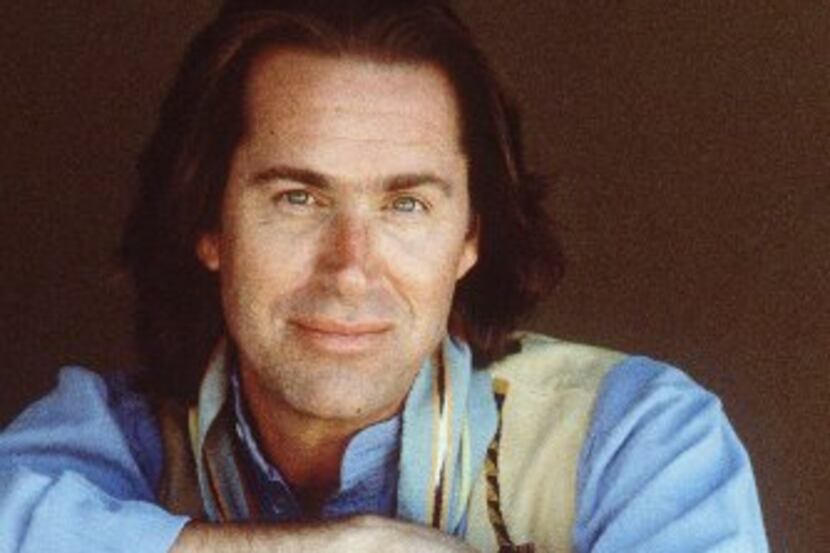Essential is a series from Dallas Morning News critics spotlighting timeless works of art and culture.
Essential listening: "Same Old Lang Syne," by Dan Fogelberg.
On a chilly Christmas Eve in 1975, singer-songwriter Dan Fogelberg embarked on a late-night errand. His family hoped to make Irish coffees but was missing a key ingredient — whipping cream. So, he headed to a convenience store. He got the whipping cream and something much more important — the ingredient to a hit song.
In the aisles of the store, Fogelberg found an old flame, the girl he had dated at Woodruff High School in his native Peoria, Ill.
She and the singer shared an on-again, off-again teenage romance. He moved west, and she headed to Chicago.
But suddenly, she was right there in front of him. She, too, had come to the store — for eggnog. Within minutes, they were sitting in her car, parked in front, at the top of Abington Hill, at Frye Avenue and Prospect Road.
Met my old lover in the grocery store The snow was falling Christmas Eve I stole behind her in the frozen foods And I touched her on the sleeve
For two hours, they drank from the six-pack of Heineken they had bought. They laughed and reminisced and worried two families, who, in a pre-cell-phone era, had no idea what had happened to them.
Little did they know that Fogelberg would take the moment and craft a song that, nearly 40 years after its release in 1980, remains a holiday keepsake.
Little did they know that Fogelberg would die of cancer in 2007 at 56.
Little did they know that the street they were parked on in the chill of the night would one day be renamed, in memory of the song and the man who wrote it. The store is still there, on what is now Fogelberg Parkway.
Jill Greulich, a retired schoolteacher who lives in Missouri, shared her feelings about the role she played in "Same Old Lang Syne" in a 2007 interview with columnist Phil Luciano in the Peoria Journal Star, not long after Fogelberg's death.
"It's a memory that I cherish," Greulich told Luciano, who recently published a moving essay by Fogelberg's widow, Jean.
"Same Old Lang Syne" continues to stand out amid what Sam Anderson, in his 2016 essay in The New York Times, calls "the creeping fascism of holiday music."
Fogelberg's song, as Anderson wrote, "is worth a precious fraction of your rapidly dwindling time on Earth." He compares it to a Raymond Carver short story, one that evolves into a "deep meditation on eternity and mortality."
It works, because like the short-story writer he could have been, Fogelberg puts us in a time and place. You listen to the song, and it's hard not to wonder what might have happened had these high school lovers been able to make it work, somehow, some way, before the snow turned into rain.
Wisely, Greulich refrained from discussing the song until Fogelberg passed away. In "Same Old Lang Syne," he has her married to an architect. In truth, her husband at the time was a physical education teacher, and no, that marriage did not work out.
We drank a toast to innocence/We drank a toast to now/We tried to reach beyond the emptiness/But neither one knew how
During their days at Woodruff, they liked to drive to a nearby lookout to listen to Joni Mitchell and Crosby, Stills & Nash, who became contemporaries of Fogelberg's soon after the release of his terrific debut album, Home Free, in 1972.
In those moments at the lookout, he read aloud to his high school girlfriend the poetry he had written, no doubt for her, and yet, separated by time and distance, he never called her or wrote her a letter to give her a heads-up about "Same Old Lang Syne," which he wrote in honor of their Christmas Eve epiphany. Five years later, she heard the song on the radio while driving to work and somehow managed to keep from running off the road.
I'm not alone in saying how much I love "Same Old Lang Syne." Sure, it's corny and schmaltzy, and yet, it touches a deep nerve. It embodies the spirit of the holidays, of time and place and the past, as well as any song I know. It also serves as a tribute to the wonders of the saxophone, which plays a key element in punctuating the lyrics with its own je ne sais quoi.
As Anderson wrote in his piece, Fogelberg's song "is simultaneously hilarious, sad, beautiful, corny and transcendent."
And, sure, he writes, it is "a bit of a groaner," but "this, it turns out, is one of the big jobs of adulthood: to find wonder in the groaning."
I love the song for how it demonstrates the magic of creativity, which springs so often from life's most ordinary moments. In the end, the song fills us with gratitude, for Fogelberg having written it and for the fact that he went out for whipping cream at the same time Greulich went out for eggnog.
From now on, our cars will be collectively parked on Fogelberg Parkway, as they should be.
Two new albums, A Tribute to Dan Fogelberg and Dan Fogelberg: Live at Carnegie Hall, were released in 2017. "Same Old Lang Syne" appears on both. On the tribute album, the San Francisco band Train sings the song.

